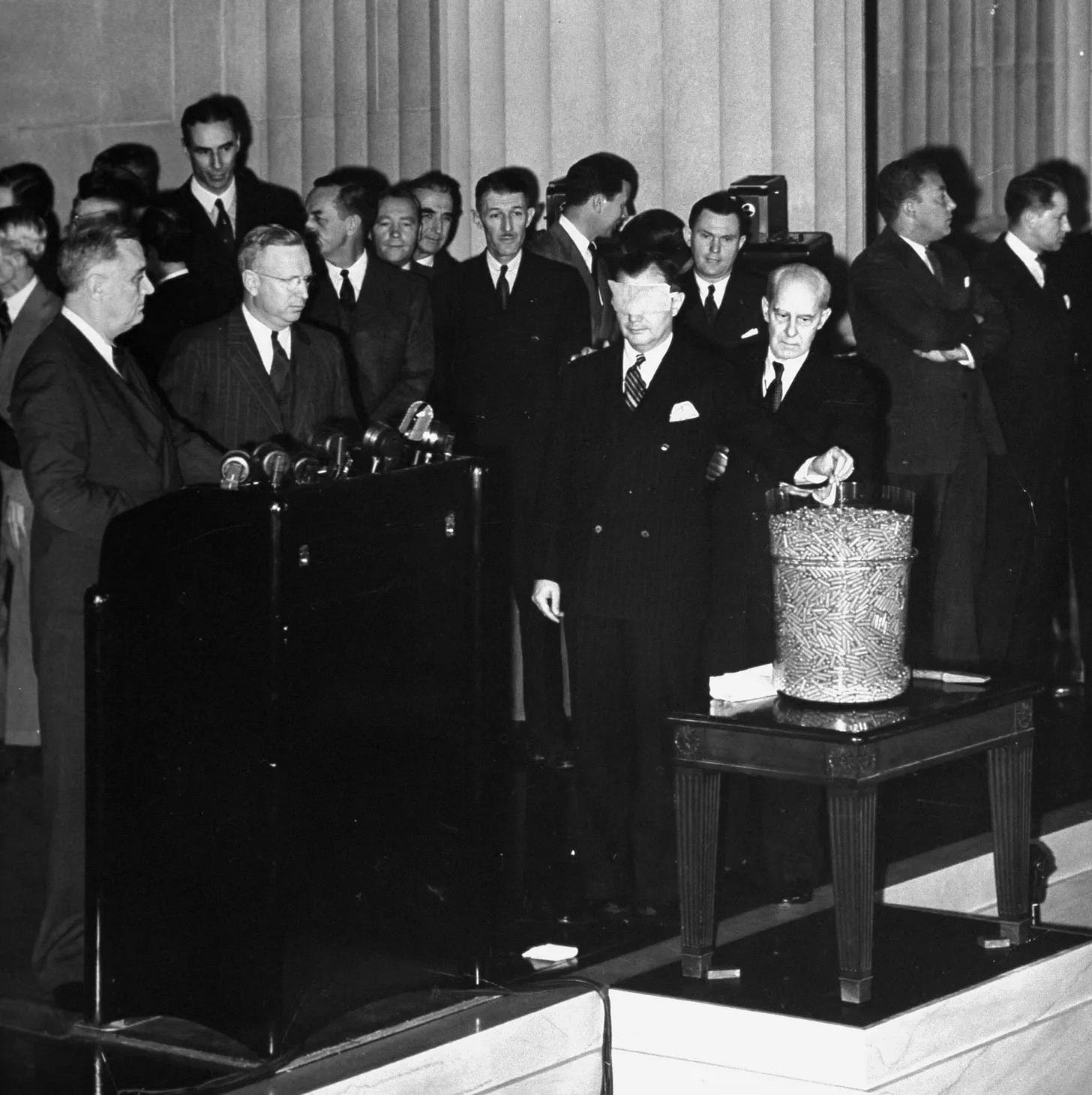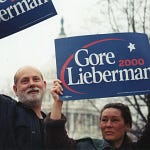This Day in Legal History: Military Selective Service Act
On June 24, 1948, President Harry S. Truman signed the Military Selective Service Act into law, establishing a peacetime draft system in the United States. The legislation came amid rising tensions with the Soviet Union, as the early Cold War stoked fears about the need for a ready and scalable military force. This marked the first time the United States instituted a draft during peacetime, following the expiration of the Selective Training and Service Act of 1940, which had been enacted during World War II. The new law required all male U.S. citizens and male immigrants between the ages of 18 and 25 to register with the Selective Service System.
The Act granted the president authority to induct men into military service, with deferments available for education, occupation, or family hardship, though these often resulted in significant disparities in who actually served. Implementation began swiftly, with the first draft lottery since World War II conducted in 1948. This system remained in effect throughout the Korean War and into the Vietnam era, evolving with amendments but continuing to shape the composition of the U.S. armed forces.
The 1948 Act also laid the groundwork for future national service debates, setting precedents for conscientious objector status and administrative appeals. Critics of the draft pointed to inequities and civil liberties concerns, while proponents argued it was essential for national defense and preparedness. Although the draft was suspended in 1973, the Selective Service System persists today, requiring registration for all male citizens and immigrants, preserving the infrastructure in case of future need. The 1948 legislation signified a turning point in American military policy, marking a transition from a wartime to a sustained peacetime defense posture.
The Supreme Court on Monday sided with the Trump administration, allowing it to resume deporting migrants to third countries without first giving them a chance to explain potential harm they could face there. This decision lifts a lower court injunction requiring due process protections like notice and a hearing before such removals, a move that drew a forceful dissent from the Court’s liberal justices. Justice Sonia Sotomayor called the action a “gross abuse” of power, criticizing the Court for enabling potentially dangerous deportations while legal challenges are ongoing.
The underlying policy targets migrants—often with criminal records—whose home countries won’t accept them back, prompting the administration to seek deportations to other nations. A class action lawsuit challenged the policy, arguing that such deportations without procedural safeguards likely violate the Constitution’s due process clause. Judge Brian Murphy had previously blocked removals to places like South Sudan, citing risks including armed conflict and political instability.
Despite Murphy’s order, the administration continued efforts to deport individuals to countries such as South Sudan and El Salvador, allegedly in defiance of judicial rulings. The administration maintains the policy is lawful and necessary to manage migrant removals. Immigrant advocates say the Court’s decision endangers vulnerable individuals and weakens judicial oversight. The ruling reflects ongoing legal tensions surrounding Trump immigration strategies, many of which have now returned to the courts since his return to office.
Supreme Court lifts limits on Trump deporting migrants to countries not their own | Reuters
Federal Reserve Chair Jerome Powell is set to begin congressional testimony this week amid political pressure from President Trump to cut interest rates. However, a recent Supreme Court ruling makes clear that Powell, and other Fed governors, cannot be removed over policy disagreements. This means Trump is unlikely to replace Powell before his term as chair ends in May 2026, and he may only get to appoint one additional Fed board member during his current term.
Some in Trump's circle have floated the idea of naming a successor now to act as a “shadow” chair, but experts warn that would confuse markets and undermine both the nominee’s credibility and the Fed’s stability. The Fed's governance structure—with long, staggered terms and a mix of governors and independent regional bank presidents—limits any one president’s influence.
Despite Trump’s calls for immediate rate cuts, Fed officials remain cautious, waiting for more clarity on the economic impact of tariffs and global instability, such as rising tensions with Iran. Interest rate decisions this year have been unanimous, including from Trump-appointed governors. With only two upcoming vacancies, the makeup of the Fed is largely locked in, reinforcing the central bank’s independence even in a volatile political climate.
Powell is staying at the Fed, with Trump appointments possibly limited | Reuters
A federal judge has blocked President Trump’s attempt to bar international students from studying at Harvard University, issuing a preliminary injunction that halts the administration’s latest move in its ongoing campaign against the Ivy League institution. U.S. District Judge Allison Burroughs ruled that the administration’s actions likely violated Harvard’s First Amendment rights by retaliating against the school for resisting demands to alter its admissions and curriculum practices.
Trump had issued a proclamation citing national security concerns, suspending entry of foreign nationals to study at Harvard for six months and directing Secretary of State Marco Rubio to consider revoking current student visas. Judge Burroughs rejected these justifications, stating the government’s effort appeared driven by opposition to Harvard’s perceived liberal stance, and warned it posed a threat to core democratic freedoms.
This ruling extends an earlier order blocking similar measures and comes as Harvard fights back through two separate lawsuits—one to protect $2.5 billion in frozen funding, and another to safeguard its ability to host international students. Nearly 6,800 foreign students attend Harvard, representing about 27% of the student body. Homeland Security had previously attempted to strip the university’s certification to enroll foreign students, also without presenting substantive evidence.
Accusations from the administration included claims of antisemitism and ties to China, which Harvard disputes. The court’s decision allows Harvard to continue welcoming international students while litigation continues, underscoring judicial resistance to executive overreach into higher education autonomy.
US judge blocks Trump plan to close Harvard's doors to international students | Reuters
In my column for Bloomberg this week, I argue that the Tackling Predatory Litigation Funding Act, which proposes a 41% tax on litigation finance profits, is more about political optics than sound policy. While the bill claims to combat foreign influence and protect American businesses, it fails on both fronts. It doesn't differentiate between foreign and domestic investors and ignores how economic costs are actually distributed—those costs won’t be eaten by funders but passed down to plaintiffs and, ultimately, to defendants via higher settlements. This is basic economics, not a national security fix.
We’ve seen this before with contingent-fee arrangements, where higher costs didn’t dampen litigation but merely increased settlement demands. The proposed tax would similarly inflate litigation costs without reducing the flow of capital into the system. It won’t stop litigation or foreign investment—it’ll just make lawsuits more expensive for everyone involved, including the very corporations the bill purports to protect.
The real issue, if one believes foreign interference is a genuine threat, is disclosure—not taxation. Congress could require transparency in litigation finance arrangements instead of disguising a foreign policy concern as a tax policy. By pitching a punitive tax as a protective measure, lawmakers are undermining both tax integrity and judicial credibility. This bill won’t fix the problem it pretends to solve; it just sends a message that certain markets are politically disfavored and fair game for symbolic taxation.
Litigation Funding Tax Proposal Solves Nothing Besides Optics













